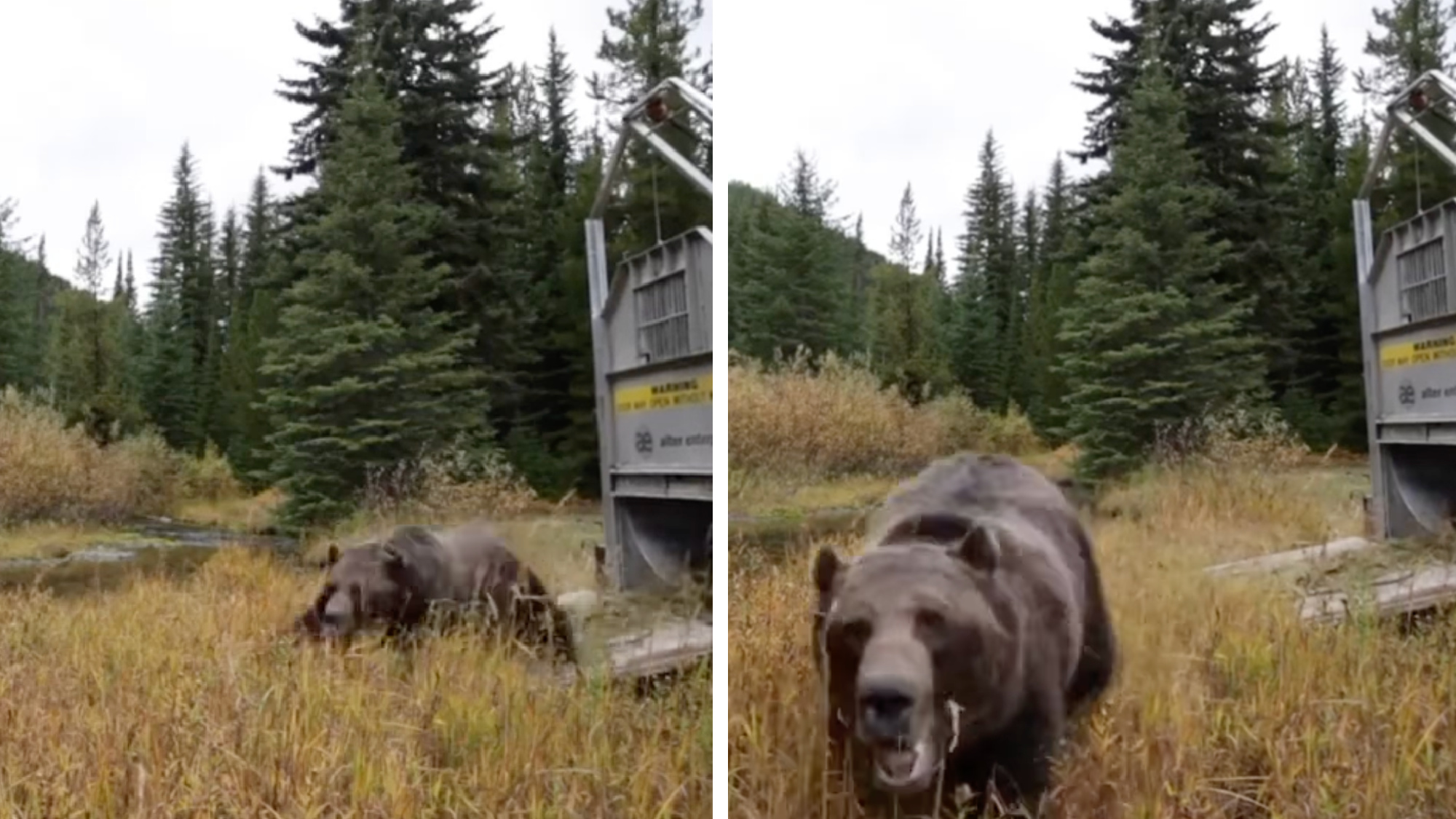Thanks to the dizzying array of humans-getting-too-close-to-wildlife footage circulating around the Internet, it’s easy to forget that some people actually get close to wildlife for a living. But then, a video like the one Tourons of Yellowstone reposted to its Instagram Tuesday resurfaces. Footage like this reminds us that professionals are the only people who should interact with living apex predators on purpose.
Career travel and adventure journalist Aaron Teasdale followed Montana Fish, Wildlife & Parks bear biologist Tim Manley into Montana’s northern Whitefish Range five years ago to trap and relocate a 22-year-old male grizzly bear. The bear had been raiding chicken coops. So FWP trapped him for release in a more remote area. Teasdale planted a camera near the door, where it would capture the bear’s first steps into its new home. But as soon as the door on the trap was high enough, the bear charged out in a fury and tackled the tripod-mounted camera instead.
“I expected him to bolt into the creek and set my camera up accordingly,” Teasdale wrote. “But he had his own idea which involved a bit of revenge on the damn humans with the audacity to trap him.”
In the video, the camera goes flying and lands lens-down in the grass. For a brief moment, the bear picks the camera up in his mouth and carries it around. He blows a few heavy breaths into the microphone before dropping the camera on the ground again and wandering off.
In 2018, FWP captured 23 grizzly bears in Region 1. The northwestern region covers the Northern Continental Divide Ecosystem, one of six grizzly bear recovery zones in the Mountain West. Along with the Greater Yellowstone Ecosystem, the NCDE is home to one of the highest concentrations of grizzlies in the lower 48. Biologists estimate that roughly 1,100 bears live in the 9,600-square-mile zone. The NCDE features plenty of dense wilderness areas like the Bob Marshall Wilderness, the Mission Mountains, and Glacier National Park (at least, the parts that tourists haven’t taken over). It’s also home to many rural communities whose members have spent a half-century re-learning how to coexist with grizzlies.
Conflict is an inextricable part of that coexistence. When it comes to Montana’s grizzly bears, conflict is what makes headlines, drums up civic debate, and even stilts platforms for local and state politicians. While euthanasia is a common result for the human-habituated grizzlies involved in certain conflicts, trapping and relocation is more common for problem grizzly bears that don’t pose immediate danger to humans, but do need relocation. This is the type of bear Manley and Teasdale release in the video.
Read Next: The Clock Is Ticking as the Feds Grapple with Delisting Grizzly Bears
Of course, “problem tourists” are also an issue in the region. Officials have euthanized several critters in Montana and Wyoming following disturbing human encounters in National Parks this summer. One commenter on the Tourons of Yellowstone post thinks the National Park Service should require park visitors to watch this video before entering Glacier or Yellowstone; especially the visitors who still think they could outrun a pissed-off grizzly.

